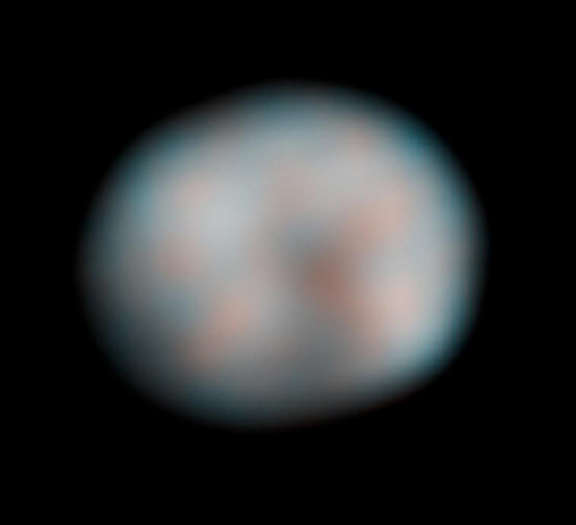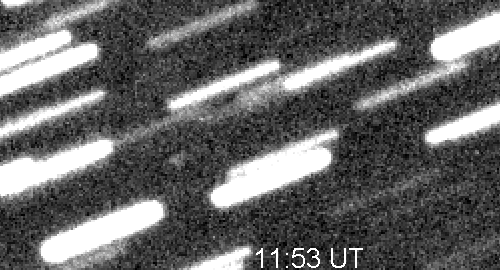Marc Rayman • Nov 03, 2010
Dawn Journal: Approaching Conjunction
Dear Dawnoweens,
Continuing its journey to collect treats in the main asteroid belt, Dawn is making excellent progress toward its July 2011 rendezvous with protoplanet Vesta. The gentle thrust of its ion propulsion system is gradually changing its trajectory around the sun, smoothly helping the spacecraft move onto a path that will perfectly match Vesta's own motion. This pas de deux is just one part of the grand solar system dance, and the choreography is about to provide a particularly pleasing tableau.
While Dawn and Vesta move ever closer into synchronized orbits in the depths of space, nearer the sun and hence in a more forceful gravitational grip, Earth is traveling more quickly in its own orbit. We have seen before that tighter orbits require greater velocity in order to counterbalance the stronger pull of gravity. Mercury and Venus orbit the sun faster than Earth. Mars moves around the sun more slowly than Earth, and all residents of the more distant asteroid belt (including Dawn) revolve at an even more leisurely pace. Last month, Earth completed its third lap around the sun since Dawn was launched, but the craft is still only about two-thirds of the way through its second loop.

In January of this year, our planet and its cosmic ambassador were on the same side of the sun. Since then, as Dawn has continued its climb up the solar system hill, the relative positions have shifted, and now they are on opposite sides. So from the vantage point of our readers who happen to be on or close to Earth in November, Dawn will appear to be near the sun. Because warranties are expiring on all those clocks sold in Dawn gift shops located throughout the universe, let's take a look at some of the new models that are in stock to help visualize the upcoming arrangement.
With the sun at the center of the clock face, Earth is on the end of the hour hand and Dawn is situated at the tip of the minute hand, which is a bit more than twice as long. The hands on this clock will not reveal how fast the orbits progress (remember, unlike the way clock hands move, Earth travels faster than Vesta), but we offer an attractive discount on the price of these souvenirs, so they are still a good choice for picturing the relative positions. Nine months ago, the star, planet, and spacecraft were aligned as they would be at 6:32:16 and Dawn was considerably closer to Earth (and nearer to the sun). Although their orbits advance in the same direction (counterclockwise, as viewed from the north), because of their differing speeds, now they are reaching their greatest separation.
On November 10, the alignment will correspond to 6:00:42. Because Dawn and Earth orbit in different planes, they will not achieve the perfect collinearity of the hands pointing in exactly opposite directions at 6:00:00. Dawn's route through space takes it north of the sun from Earth's perspective. The distant spacecraft will be located less than 4 degrees north of our brilliant star from Nov. 8 to 12. (For scale, the sun itself is half a degree in diameter.) During those days, when you go outside to gaze just above the sun and contemplate the grandeur of a craft from Earth traveling out there, far on other side of that star, if you block the blinding light with two fingers, they can cover not only the sun, but Dawn as well.
The last time such a close alignment occurred for terrestrial observers was December 2008. On that occasion, Dawn moved even closer to the Sun, corresponding to 6:00:10. (Its orbit had not yet undergone the dramatic changes from the subsequent gravitational bending by Mars plus another 465 days of ion thrusting.) Radio signals traveling between Earth and the spacecraft had to traverse the fiery plasma surrounding the star, creating powerful interference, but the radio silence presented opportunities for reflections upon the nature of such interplanetary voyages. In the arrangement this November, Dawn will skirt just far enough from the sun that communications should not be compromised.
The faint radio waves that provide the explorer's only bond with home will have a long way to travel. During this time, Dawn will be about 3.06 astronomical units (AU) from Earth. Because the orbits are not quite as simple as the motions of hands on a clock, the instant of greatest separation does not occur until November 13 (at 6:10 p.m. PST, for those who want to be with friends and family at the appropriate moment). Then as Earth continues its more rapid progression around the sun, the range will begin declining and will continue to do so until next summer. It will not be until January 2012 -- while Dawn is hard at work in orbit around Vesta, taking pictures and acquiring other precious scientific data -- that it will be this far again. By then, it will have climbed still farther from the solar system's center, so it will attain even greater distances from Earth that year.
Even this time, however, the distance is staggering. Dawn will be nearly 458 million kilometers (284 million miles) from its erstwhile home. (Quite by coincidence, given that the probe's orbit has changed significantly, the last time it reached a temporary maximum in the range to Earth was almost exactly two years ago. At that time, the distance was 384 million kilometers, or 239 million miles.) Well over one million times farther from Earth than the International Space Station, farther than Mercury, Venus, or Mars can ever be, farther than all but a handful of other trailblazing craft have ever reached, the ship sails ahead patiently and calmly on the cosmic seas, propelled by a zephyr of xenon.
Dutifully following the course set for it by operators on remote Earth, Dawn ventures toward the horizon and keeps going. When it was last descried by a telescope, the probe had been in space only three days and was more than 470 times closer to the planet than it is now.

While much too far now for our eyes and even our telescopes to detect, the greater power of our passionate imaginations still can bring the faraway explorer into sharp focus. On the far side of the sun, the indefatigable spaceship continues to strive toward the unexplored world Vesta, the first stop on an exceedingly ambitious undertaking assigned to it by beings confined to the vicinity of a distant planet. At the same time we are humbled by how limited our place and our role are in the cosmos, we are emboldened by our own astonishing successes in essaying to grasp the nature of the universe. On the far side of the sun, Dawn stands atop a pillar of blue-green xenon ions, a monument to the vigor of human ingenuity, determination, curiosity and adventure.
Dawn is 0.11 AU (16 million kilometers or 10 million miles) from Vesta, its next destination. It is also 3.05 AU (456 million kilometers or 284 million miles) from Earth, or 1240 times as far as the moon and 3.07 times as far as the sun. Radio signals, traveling at the universal limit of the speed of light, take 51 minutes to make the round trip.
Dr. Marc D. Rayman
6:00:42 p.m. PDT October 31, 2010
P.S. For Halloween this year, your correspondent found that he could not fit into his costume from a year ago, so instead he is pretending to be someone who can refrain from wearing a costume. Oops.
Support our core enterprises
Your support powers our mission to explore worlds, find life, and defend Earth. You make all the difference when you make a gift. Give today!
Donate

 Explore Worlds
Explore Worlds Find Life
Find Life Defend Earth
Defend Earth

